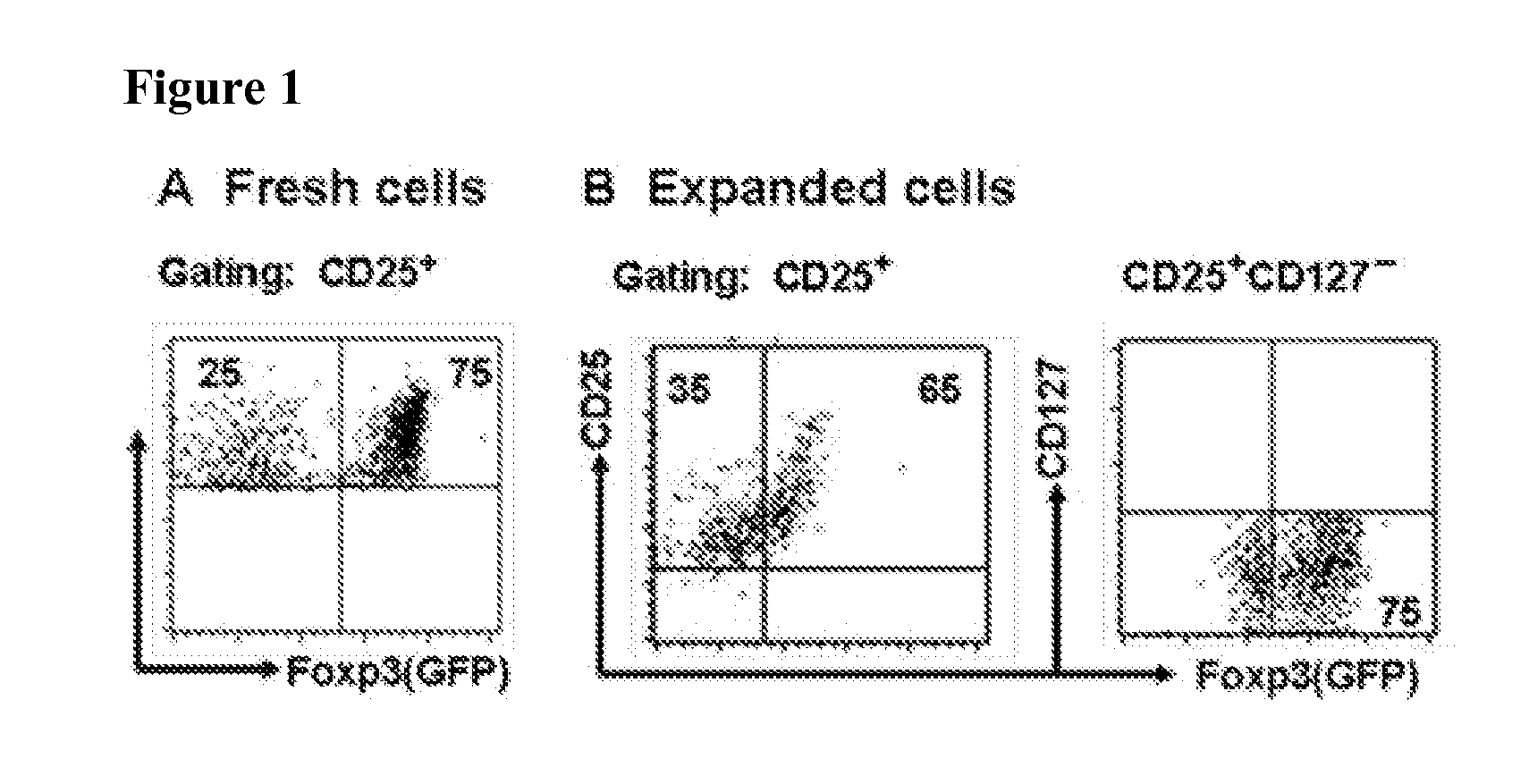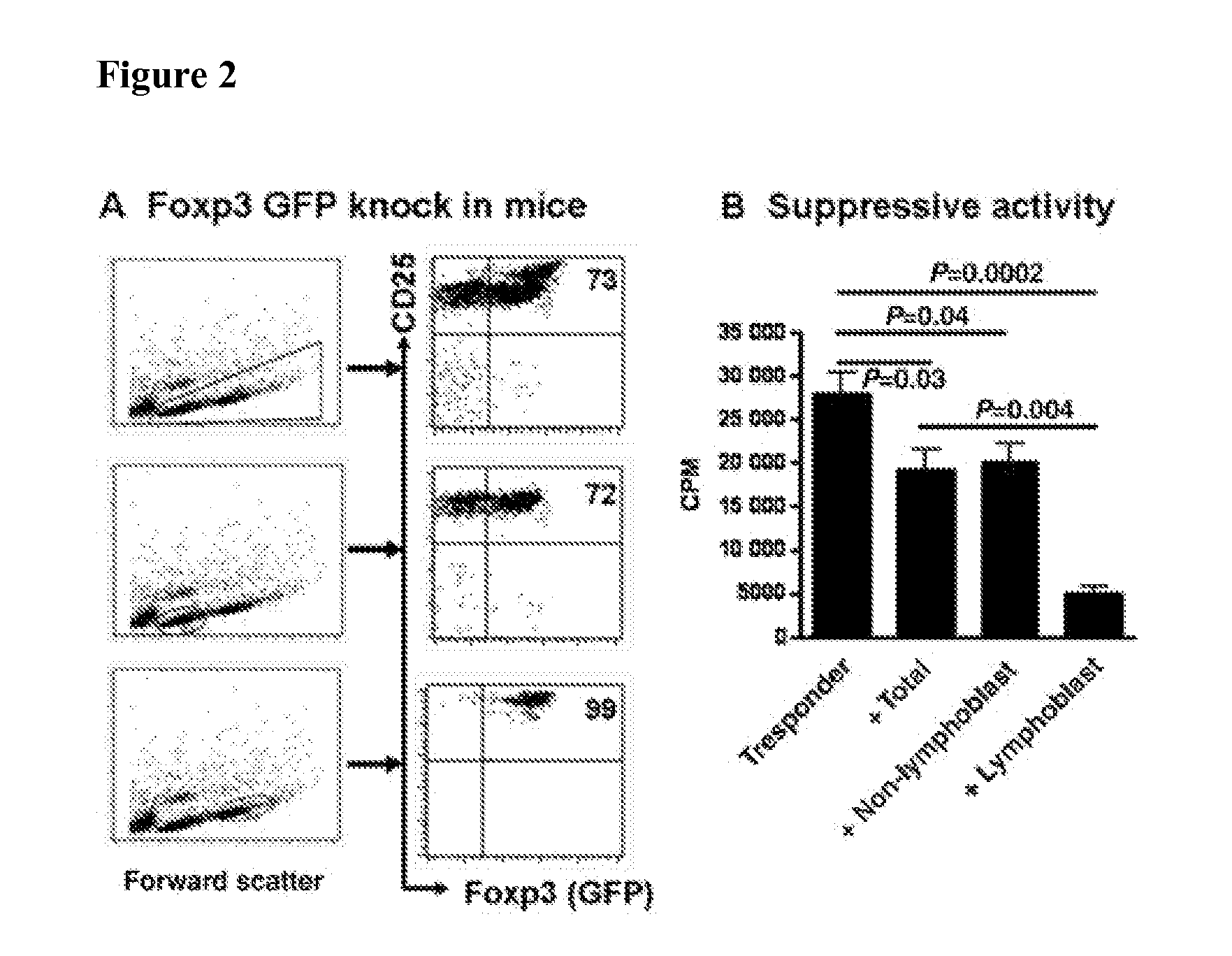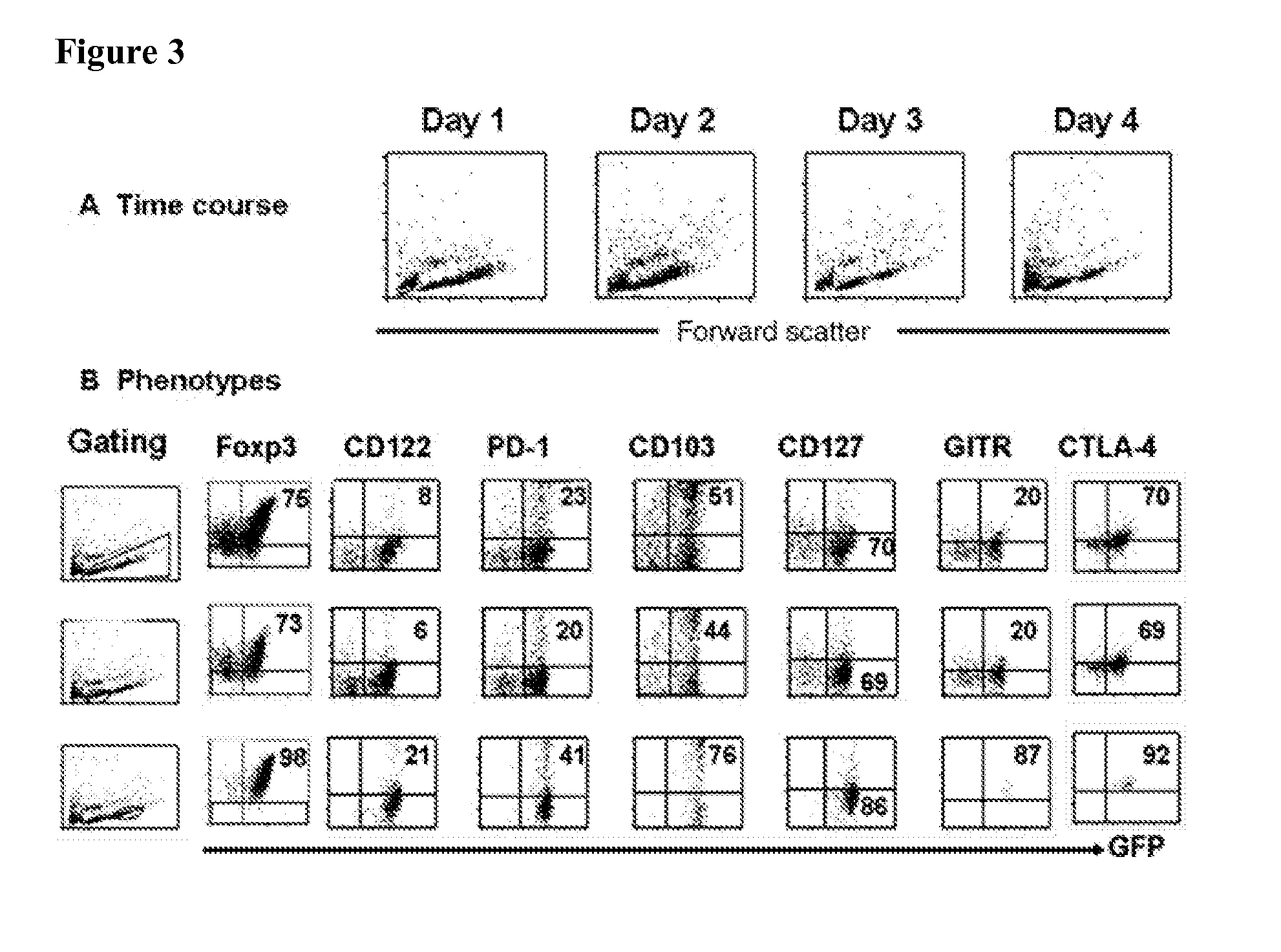Methods for the enrichment of viable foxp3+ cells and uses thereof
a technology of foxp3+ cells and enrichment methods, which is applied in the field of methods for the enrichment of viable foxp3+ cells, can solve the problems of contaminated treg subsets with effector t cells, and it is not possible to directly isolate viable foxp3sup, and achieves high forward scatter, low side scatter, and high forward scatter
- Summary
- Abstract
- Description
- Claims
- Application Information
AI Technical Summary
Benefits of technology
Problems solved by technology
Method used
Image
Examples
example 1
FACS Scatter Characteristics Define a Population Enriched for Foxp3+ Cells
[0072]Conventional methods for enriching for Treg cells employ a combination of CD4 and CD25 surface marker staining. In order to analyze how effective this scheme is in enriching for Foxp3+ cells, Foxp3gfp knock-in mice were used. Foxp3gfp knock-in mice possess a green fluorescence protein (GFP) inserted within the Foxp3 gene. Using this combination of markers, CD4, CD25, and GFP, revealed that only about 75% of CD4+CD25+ were positive for GFP (FIG. 1A). Gating on CD127-(hIL-7R-M21) cells did not markedly improve this percentage. Thus, many of the cells isolated by the combination of CD4 and CD25 presumably do not express Foxp3.
[0073]In many instances, CD4+CD25+ cells are isolated and expanded in vitro. It was of interest to determine whether the expansion of such cells in culture would result in an increase in the proportion of cells positive for GFP, and in turn Foxp3. In order to accomplish this, splenic T...
example 2
Isolated Lymphoblast Population Possesses Suppressive Activity
[0077]To measure the in vitro suppressive assay, T cells isolated from Foxp3gfp knock-in mice were stimulated with soluble anti-CD3 (0.25 μg / ml) in the presence of γ-irradiated APC (1:1) with or without lymphoblast or non-lymphoblast cell population in the 1:4 ratio (1 Treg subset to 4 T responder). 3H-thymidine (1 μCi / 96 well) was added to cultures in the last 16 hours and cell proliferation was measured by using a liquid scintillation counter. As shown in FIG. 2B, while expanded nTreg cells harvested from total or sorted from non-lymphoblast cell populations significantly suppressed T cell proliferation, expanded nTreg cell sorted from the lymphoblast population displayed more potent suppressive activity. In fact, Foxp3− (GFP−) cells sorted from expanded CD4+CD25+ cells exhibited little suppressive ability.
example 3
The Lymphoblast Population is also found in Induced Tregs
[0078]The combination of IL-2 and TGF-β is able to induce CD4+Foxp3+ iTregs that are similar in phenotype and functional characteristics with nTregs. Whether the lymphoblast population could be identified in iTreg was explored. Naïve CD4+GFP− cells stimulated with anti-CD3 / CD28 coated beads and IL-2 and TGF-β. As is shown in FIG. 3, after three days under these culture conditions, two cell populations, akin to the lymphoblast and non-lymphoblast population were witnessed. Compared with total lymphocyte and non-lymphoblast populations, the lymphoblastic iTregs expressed significantly higher levels of Foxp3, CD25, CD103, CD122, PD1, GITR, and CTLA-4 and lower levels of CD127 (FIG. 3B), similar to the characteristics of purified Treg cells.
PUM
 Login to View More
Login to View More Abstract
Description
Claims
Application Information
 Login to View More
Login to View More - R&D
- Intellectual Property
- Life Sciences
- Materials
- Tech Scout
- Unparalleled Data Quality
- Higher Quality Content
- 60% Fewer Hallucinations
Browse by: Latest US Patents, China's latest patents, Technical Efficacy Thesaurus, Application Domain, Technology Topic, Popular Technical Reports.
© 2025 PatSnap. All rights reserved.Legal|Privacy policy|Modern Slavery Act Transparency Statement|Sitemap|About US| Contact US: help@patsnap.com



